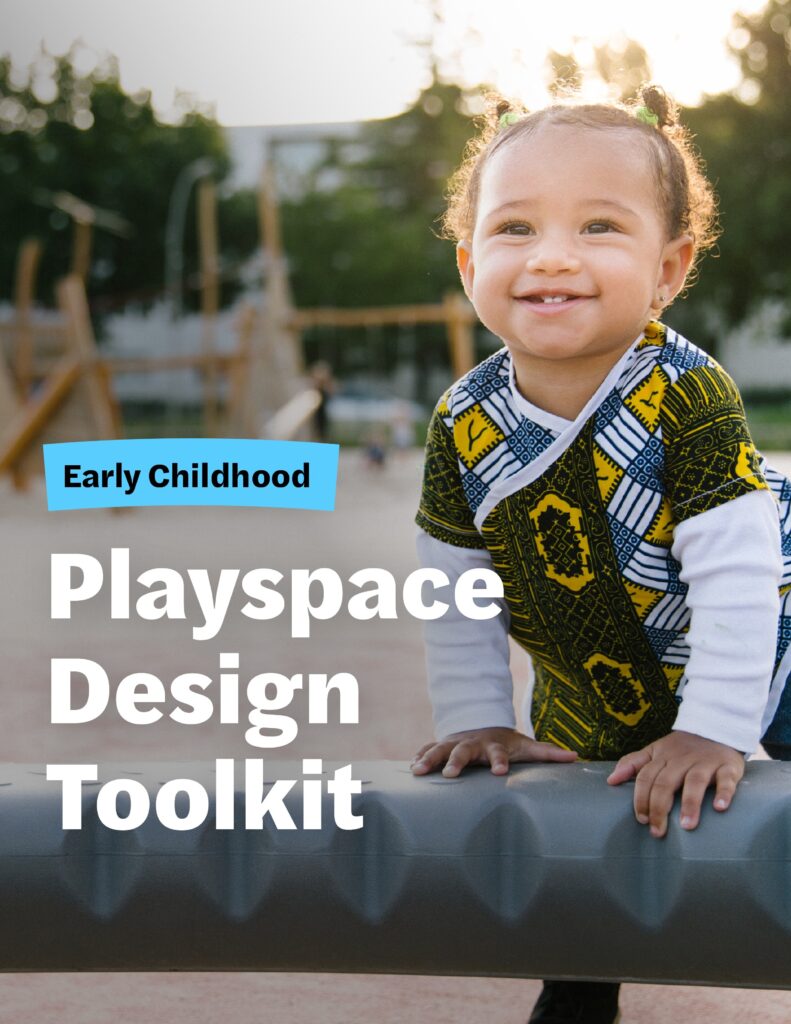The KABOOM! Early Childhood Playspace Design Toolkit is a new resource that empowers early learning providers, city leaders, and planners with tools to create developmentally-appropriate outdoor environments that help children ages 0 to 5 grow and thrive.
The first five years of life are critical for brain development, yet most outdoor spaces are not designed with the unique needs of babies, toddlers, and preschoolers in mind. This toolkit offers a roadmap to change that. It provides practical, research-informed strategies for building outdoor spaces that support early development, promote equity, and strengthen climate resilience.
The toolkit was developed with support from Overdeck Family Foundation and shaped by a national advisory council of leading experts with subject matter expertise in early childhood, mental and physical health, play, inclusive universal design, playful learning, equitable and culturally responsive design, and nature-based design. Their insights ensured the recommendations reflect both evidence-informed best practices and on-the-ground realities.
What’s Inside the Toolkit
At the heart of the toolkit are strategies that help educators, childcare facility operators, city leaders, and others think holistically about what young children need from outdoor play environments. These include:

- Designing for whole-child development across physical, cognitive, and social-emotional domains
- Creating inclusive spaces where all children can engage in meaningful play
- Integrating natural elements to promote sensory exploration and climate adaptation
- Reflecting community culture and identity in the built environment
- Planning for long-term use, maintenance, and programming
- Centering community voice and equity throughout the design process
The toolkit also outlines seven core play types that support early childhood development, from social and imaginative play to nature-based and restorative experiences. It includes real-world case studies from cities and towns across the country to show how these ideas come to life in diverse settings, from nature play areas in public parks to bike loops and mud kitchens at early learning centers.
The Purpose of Play: Why This Matters for Communities
This toolkit is more than a design manual. It is an invitation to childcare facility operators, early learning funders and city leaders to rethink how early learning spaces and public spaces can better support the youngest members of our communities. Play is a developmental necessity. When communities prioritize high-quality playspaces for young children, they are investing in better health outcomes, stronger communities, and more equitable futures for the youngest generation.
Whether you are a parks director, planner, early childhood advocate, or architect, this guide is designed to support your efforts. You can start small by assessing an underused green space near a childcare program or use it to inform a citywide strategy for early learning infrastructure.
We are grateful to Overdeck Family Foundation for making this work possible and to our advisory council for their invaluable leadership. It’s up to us to provide opportunities for enriching outdoor play. Together, we can build a world where every child, starting at birth, has access to joyful, inclusive, and developmentally-rich spaces.
